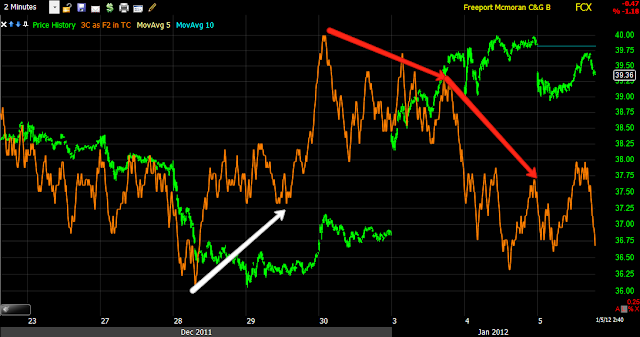I noted in nearly every post today how the market was totally disconnected from any environment that would signal a risk on rally. If you look at the "3 Pillars of the Market" (although there are 10 main industry groups, the market can't go far without these 3: Tech, Financials and Energy) Energy got hit on a double whammy, both the petroleum/crude report which showed a build (not good for energy/crude prices) and the dollar strength via Euro weakness. XLE closed down -.59%, Tech/XLK was up but by a meek .35%, the driver today was financials, XLF closed up 1.35%. In other words, financials drove the market higher (in a few cases), but well off the a.m. lows.
Why?
Yesterday, the F_E_D apparently handed in a white paper to Congress saying that the GSEs (Fannie Mae/Freddie Mac) could help the housing market and a rumor got started that Obama in an election year would be starting a massive mortgage refi program through the GSEs. This story struck me as bunk as Congress (remember the GSEs were taken over by the government) has been trying to distance themselves and funding for these two monstrosities. The chances of a bill like that passing, especially being that it would be an election year perk and face heavy opposition from Republicans, in my view was a total non-starter, but it was enough to get a few of the banks with the most exposure to underwater mortgages to pop nicely, take BAC for example, up 8.61% on the day. When I announced I was going with March 7 Puts on BAC today, this whole myth played in to my thought process and that's why I went a little longer on the expiration, to allow enough time for traders to realize the issue would be a non-starter.
Well it didn't take long and I expect I'm going to have some very handsome gains on the BAC trade come tomorrow a.m. As of now BAC is down nearly 3% in AH. Why?
Because it didn't take days to debunk the myth, it took 7 hours and interestingly, right after the market close. Remember there are still a lot of hedge funds out there that appreciate any strength in BAC to unload their huge positions.
As Bloomberg reported about an hour ago... (actually, very conveniently at 4:10 p.m., 10 minutes after the close)
White House Said to Have No New Plan for Refinancings
The White House has no plans for a new mass mortgage refinancing program, an administration official with knowledge of the matter said.
This is what sparked the BAC rally and what will kill it
Bank of America Corp. (BAC) led a surge in shares of U.S. lenders today on speculation that the Obama administration might provide more aid to distressed homeowners.
And there it is...
Of course some lingering questions remain about White House / Wall Street ties, the rumor's timing and the denial's timing.





















































